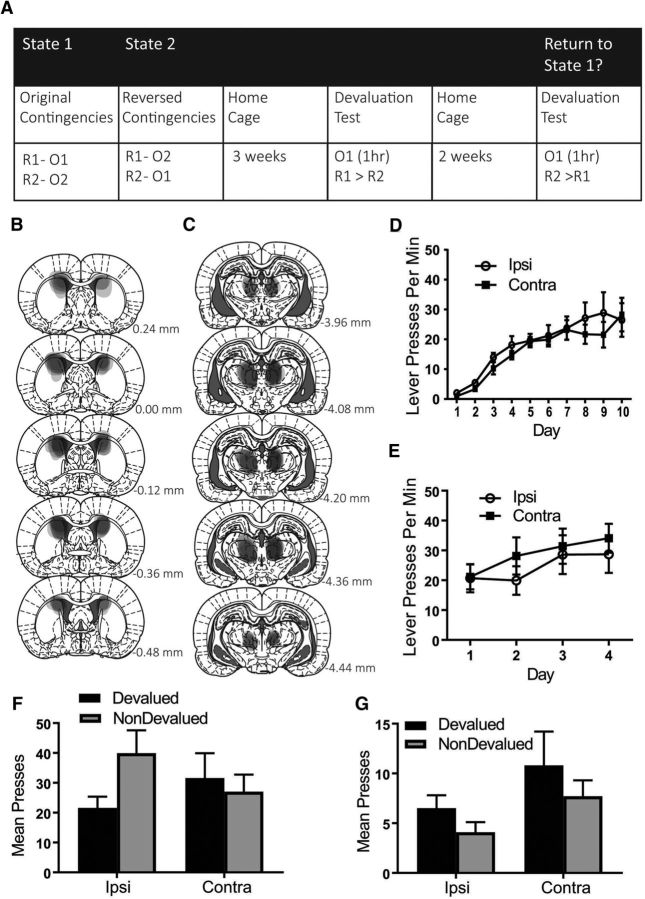Figure 3.
Experiment 2B: Extinction of reversed contingencies, rather than a specific training-test interval, is critical to return responding to the original contingencies. A, Rats were trained to press two levers for two separate outcomes, trained on the reversed contingencies, and then returned to their home cages for 3 weeks, followed by a devaluation test. Rats were then returned to their home cages for a further 2 weeks, followed by another devaluation test. B, C, Representation of lesion placements showing each overlapping cytotoxic lesion for pDMS (B) and PF (C). D, Mean lever presses per minute (±1 SEM) during acquisition of the lever press response. E, Mean lever presses per minute (±1 SEM) during acquisition of the reversed contingencies. F, Mean total presses (±1 SEM) during devaluation testing after 3 weeks in the home cage. G, Mean total presses (±1 SEM) during devaluation testing after an additional 2 weeks in the home cage. R1, Response 1; R2, response 2; O1, outcome 1; O2, outcome 2. Group IPSI, n = 7 and Group CONTRA, n = 7.

